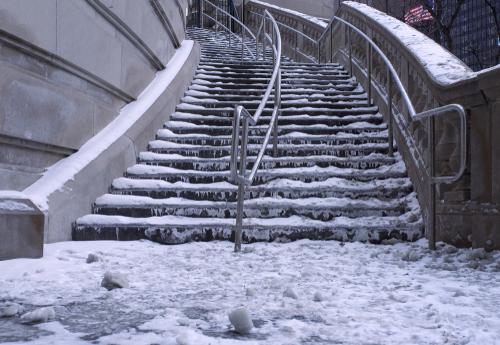What Happens to Concrete When the Temperatures Drop Below Freezing?
Oct 16 2018
Concrete Renovations is often required by clients to repair common concrete damage and deterioration caused by carbonation, corrosive contaminates and freezing. While concrete is a durable, long-standing material, without proper protection it is at risk of damage in certain situations, for example in polluted cities where the rain has a higher acidity PH or when temperatures drop below freezing.
Protecting Concrete
Practices have changed during the evolution of concrete use. For example, the chlorides that were used previously to speed up the curing process of concrete in low temperatures that led to contamination are no longer used, while treatments have been developed to slow down potential corrosion of steel rebar reinforcements within the concrete. Regarding protecting concrete from damage caused during the freezing/thawing process, special water barrier protective solutions have been developed to directly apply to the exterior of the concrete surface to protect against water ingress.
Damage Caused by Freezing
It’s not the weather itself that causes damage to concrete structures during freezing temperatures, but the ingress of water and moisture into porous concrete structures. This water fills the gaps and pores in the concrete and when temperatures drop below freezing, the water freezes and expands up to 9% in the process. This creates internal forces within the structure that can cause hairline cracks to widen and puts the structure at risk of expansion and crumbling if the forces exceed the tensile strength of the concrete.
Where water is present on the surface of the concrete, it can cause surfaces to deteriorate as the water freezes and melts during changing day and night temperatures. Properly cured and finished concrete is less likely to experience surface deterioration than unhardened or newly-placed concrete in low temperatures.
Damage Caused by Freezing to Rebar
Water ingress in concrete can have increased damaging effects on the presence of unprotected rebar. Over time, the steel exposed to air and water is liable to rust, causing the metal to expand and causing pressure, not unlike trapped freezing water, leading to cracking, crumbling structures. Moisture ingress can also cause problems with corrosion so ensure that your concrete surfaces have sufficient protection before the damp autumnal weather rolls over the country.
If your concrete structure is already showing damage from wet or freezing weather, consider getting in contact with our team to enquire after our concrete repair services. We offer everything from historic repair to resin injections - give us a call on 01733 560362 or email us on sales@concreterenovations.co.uk.

